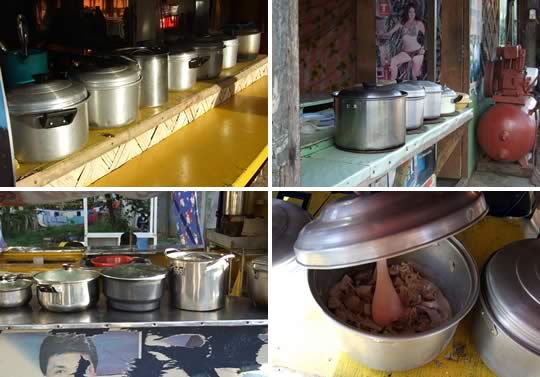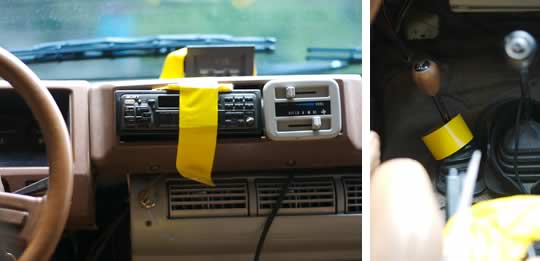
How far can we modify an object before it becomes unrecognizable or permanently altered? How many mistakes must be made to determine that limit? At what point do modifications become useful enough to become adopted as the norm? When a modification doesn’t quite meet needs, how much time and investment and additions must be made for them to function as desired? Plastic palettes as steps into family swimming pool and footholds carved into coconut trees .

Visual cues as to contents vs. cost vs. perceived cost. Uniformity can indicate quality and sanitation: think Western cafeterias. And how this changes the contents (and perceptions thereof)…is one cheaper but perhaps better, more ‘home-cooked’?

At what point does identification and security begin to change the object itself? Where do we draw the line between compromise and perception (and actual degradation) of intention.

Wear as an indicator of use and need. We can design to expect and accommodate that, but where do we draw our expectations from, and how much should we design into an object and how much should the user design out of it? Semi-permanent fan in a family dinning room, Manila.

Duct tape to hold together an old car. No surprise there, but by what intention (or lack of intention) does the makeshift and the make-do become the primary tool and standard? Does convenience, both of the tool itself and its storage proximity, play as large a role as the usefulness of the tool itself?

The boundary between service and self-service. The storage and availability of tools, who they are intended for, shared knowledge of use and how often can these areas overlap or coincide to mutual satisfaction and beneficial results. Calculators, signs and scoops, Sunday Market, Puerto Princesa.
Observations Part III (Part I and Part II) during a Philippines internship.
Tools and Modification
by
Tags:
Leave a Reply